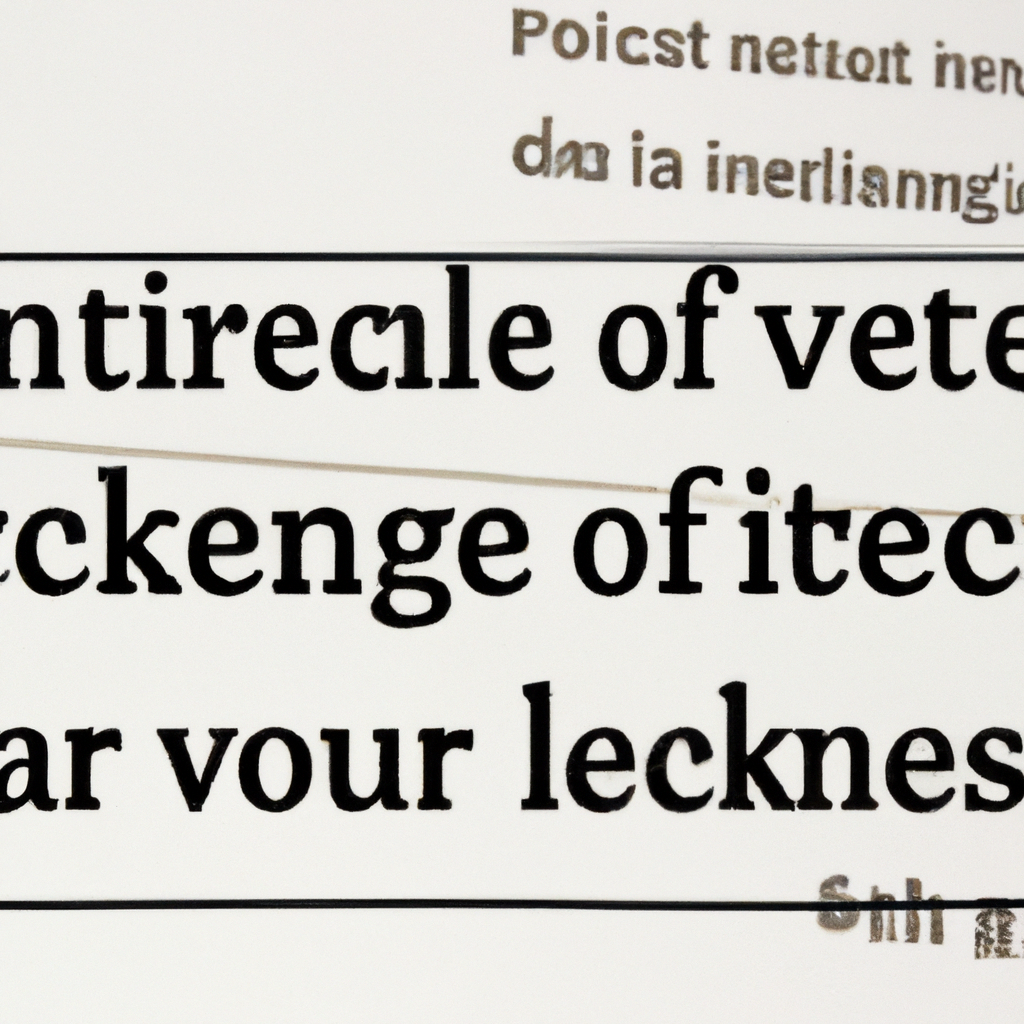Recognizing and Addressing Fear and Phobias in Dogs
As the sun dipped below the horizon, casting flickering shadows across the room, Sam observed his dog cowering in

In a world filled with tail wags and endless belly rubs, it’s easy to assume that dogs live a life free from worries or fears. However, just like their human companions, our canine friends are not immune to the haunting grip of anxiety. Unseen by many, fear and phobias can silently consume the hearts of our furry companions, affecting their overall well-being and joy. But fear not, for this article sheds light on the often overlooked realm of recognizing and addressing fear and phobias in dogs. Brace yourselves, fellow dog lovers, as we embark on a journey to unveil the mysteries behind their trembling paws and help them conquer their deepest fears.
Recognizing the Signs of Fear and Phobias in Dogs
Our furry companions, just like humans, can experience fear and phobias that greatly impact their well-being. As responsible pet owners, it is crucial for us to understand the signs that indicate distress and unease in our four-legged friends. By recognizing these signs early on, we can provide the support and care they need to overcome their fears. Here are some key indicators to look out for:
- Physical cues: Pay attention to your dog’s body language. Trembling, panting excessively, drooling, or attempting to hide are physical signs that your furry friend may be afraid or suffering from a specific phobia.
- Behavioral changes: Notice any sudden changes in your dog’s behavior. Aggression, excessive barking, urinating or defecating indoors, pacing, or chewing destructively can all be signs of fear or phobias.
- Avoidance: If your dog tries to escape or avoid certain situations or places, it may be an indication of fear. Observing their avoidance behavior can help you identify the triggers and work towards desensitizing your pet.
Remember, every dog is unique, and their fears and phobias may vary. Some common fears include thunderstorms, fireworks, separation anxiety, or fear of specific objects or noises. It is important to approach their fears with patience and empathy, allowing them to overcome their anxieties gradually. Seeking professional guidance from a veterinarian or animal behaviorist can provide invaluable insights into your dog’s specific fears and help you develop a personalized plan to alleviate their distress.

Understanding the Root Causes: Uncovering the Origins of Canine Fear
When it comes to our furry companions, understanding the root causes of canine fear is crucial for their overall well-being. Identifying the origins of this emotion can assist in creating effective strategies to help fearful dogs lead happier lives. Let’s explore some key points to gain a deeper understanding of canine fear:
- Negative Experiences: Fear in dogs can stem from past negative encounters, such as traumatic events or mistreatment. These experiences can leave a lasting impact, triggering fear responses when similar situations arise.
- Lack of Socialization: A lack of socialization during a dog’s critical developmental stage can contribute to fear later in life. Limited exposure to different people, animals, and environments may result in anxiety and fear towards the unknown.
- Genetics: Certain breeds may possess genetic predispositions to fear or anxiety. It’s important to recognize that individual dogs within these breeds can still vary in their reactions and experiences.
Understanding these root causes is just the first step towards helping fearful dogs. Identifying the primary trigger is crucial to create effective behavior modification plans that suit each dog’s unique needs. With patience, love, and appropriate training methods, it is possible to help fearful dogs overcome their fears and live happier, more enriched lives.

Addressing Fear and Phobias: Effective Strategies and Techniques
Fear and phobias can be overwhelming and disruptive to daily life, but there are effective strategies and techniques that can help individuals address and overcome their fears. By combining psychological approaches, self-reflection, and gradual exposure, individuals can reclaim control over their lives and conquer their deepest anxieties.
1. Cognitive Behavioral Therapy (CBT): CBT is a powerful tool often used to treat fear and phobia-related disorders. This therapy encourages individuals to challenge and rewire their negative thought patterns, enabling them to adopt healthier perspectives towards their fears.
2. Mindfulness and Relaxation Techniques: Practicing mindfulness and relaxation techniques can be highly beneficial when addressing fears and phobias. By training oneself to be present and accepting of their fears in a calm and relaxed state, individuals can build resilience and reduce anxiety.
3. Gradual Exposure and Desensitization: Facing fears head-on may seem daunting, but gradually exposing oneself to fear triggers can be remarkably effective. Through a carefully structured approach, individuals can gradually desensitize themselves to their fears, learning to confront and manage them in a controlled and supportive environment.
4. Support System: Building a strong support system is vital in addressing fear and phobias. Seeking encouragement and guidance from friends, family members, or support groups can provide comfort, reassurance, and helpful insights throughout the journey of overcoming fears.
Remember, overcoming fear and phobias is a personal journey, and each individual may respond differently to various strategies. Tailoring these techniques to suit personal needs and seeking professional guidance can significantly increase the chances of success. With determination and perseverance, anyone can conquer their fears and live a more fulfilling life.

Building a Positive Relationship: Creating a Safe and Supportive Environment for Anxious Dogs
Understanding the Needs of Anxious Dogs
When it comes to building a positive relationship with anxious dogs, it is vital to create a safe and supportive environment that caters to their unique needs. These sensitive souls often require a little extra patience and understanding to help them thrive. Understanding the causes of their anxiety is the first step towards providing the best care possible.
First and foremost, it is essential to create a calm and consistent routine for your anxious furry friend. Establishing a predictable daily schedule will help alleviate their stress and provide a sense of security. Additionally, providing a designated safe space where they can retreat during moments of overwhelm can work wonders. This could be a quiet corner with comfortable bedding or a crate covered with a cozy blanket to create a den-like atmosphere.
- Give them plenty of mental stimulation through interactive toys and puzzles.
- Try using pheromone diffusers or calming scents to create a soothing atmosphere.
- Implement positive reinforcement techniques to build their confidence and trust.
- Gradually expose them to their fears or triggers in a controlled and supported manner.
Remember, patience is key when working with anxious dogs. By creating a safe and supportive environment tailored to their needs, you can help them overcome their anxiety and build a strong, positive bond that will last a lifetime.
Future Outlook
As we wrap up our exploration into recognizing and addressing fear and phobias in our beloved canine companions, we hope to have shed light on the often overlooked emotional struggles that our furry friends face. Our dogs give us unconditional love, and it is our duty as responsible pet owners to understand and support them in their times of fear and distress.
Just like humans, dogs experience a broad range of fears and phobias that can significantly impact their well-being and quality of life. It is crucial to approach their anxieties with compassion, patience, and an open mind. By acknowledging their fears, we take the first step towards helping them overcome their obstacles.
While it may seem intimidating, addressing fear and phobias in dogs can be an incredibly rewarding journey. With the right approach and guidance, we can effectively support our four-legged companions in reclaiming their confidence and reducing their anxieties.
Through slow desensitization techniques, professional training, and the utilization of positive reinforcement, we have the power to empower our furry friends. Every small victory is a testament to the strength of our bond and the resilience of our beloved pets.
Remember, recognizing and addressing fear and phobias is an ongoing process that requires dedication, consistency, and empathy. We must remain attuned to our dog’s signals, help them navigate their triggers, and create a safe and understanding environment.
As we conclude this article, let us not forget the importance of seeking professional help whenever necessary. Veterinary behaviorists and certified dog trainers are valuable resources that can provide tailored guidance to ensure a successful journey towards overcoming fears and phobias.
So, dear readers, let us embark on this adventure of understanding, nurturing, and empowering our dogs. By recognizing and addressing their fears, we embark on a path towards a stronger and more harmonious bond with our loyal companions. Together, we can help them navigate the world with confidence and love, because after all, what greater gift is there than to be the strength our beloved dogs need in the face of fear?






